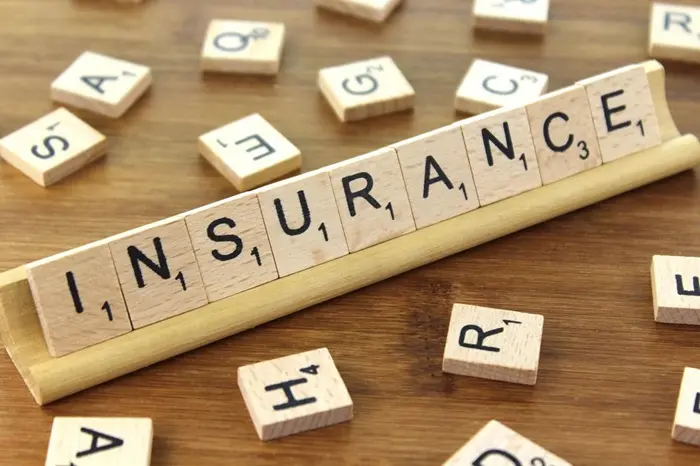Sewer and drain insurance is a specialized type of coverage designed to protect homeowners from the financial burden of repairing or replacing damaged sewer lines and drainage systems. These systems are critical for maintaining proper sanitation and preventing water damage to properties. Standard homeowners’ insurance policies often exclude sewer and drain-related issues, leaving property owners vulnerable to unexpected expenses.
This insurance fills the gap by covering repairs, replacements, and sometimes even preventive maintenance for sewer and drain systems. It can be purchased as a standalone policy or as an add-on to existing homeowners’ insurance, depending on the provider.
Key Components of Sewer and Drain Coverage
Pipe Repairs and Replacements
One of the primary functions of sewer and drain insurance is to cover the costs associated with repairing or replacing damaged pipes. This includes both interior and exterior piping systems that connect the home to municipal sewer lines or septic tanks. Damage can occur due to aging infrastructure, ground shifting, or invasive tree roots.
The coverage typically includes excavation costs if necessary to access the damaged pipes. Some policies may also cover the restoration of landscaping or hardscaping disturbed during repair work.
Blockage Removal and Cleaning
Sewer and drain insurance often includes coverage for removing blockages and cleaning the lines. Blockages can result from accumulated debris, grease buildup, or foreign objects entering the system. Professional cleaning services to maintain proper flow and prevent future issues are frequently included in comprehensive policies.
This aspect of coverage helps prevent minor issues from developing into major problems that could lead to backups or pipe bursts.
Water Backup Protection
Many sewer and drain insurance policies provide coverage for water backup incidents. When sewer lines become blocked or overwhelmed, wastewater can reverse flow and enter the home through drains, toilets, or other fixtures. This coverage helps pay for cleanup, disinfection, and damage repair caused by such backups.
It’s important to note that water backup coverage may have specific limits and may not include all types of water damage, so policyholders should review their terms carefully.
Common Causes of Sewer and Drain Damage
Tree Root Intrusion
Tree roots seeking moisture can infiltrate sewer lines through small cracks or loose joints. As roots grow, they can cause significant damage to pipes, leading to blockages or complete pipe collapse. Sewer and drain insurance typically covers repairs necessitated by this natural but destructive phenomenon.
Ground Movement and Settlement
Shifting soil, frost heave, or seismic activity can misalign or fracture underground pipes. These gradual changes often go unnoticed until a serious problem emerges. Insurance coverage helps mitigate the costs of addressing these infrastructure challenges.
Pipe Deterioration
Over time, pipes naturally deteriorate due to age, corrosion, or chemical reactions with soil and wastewater. Many older homes have pipes made of materials that are more susceptible to decay. Insurance coverage can help homeowners replace aging systems before catastrophic failures occur.
External Pressure Damage
Construction activity, heavy vehicle traffic, or improper excavation near sewer lines can cause physical damage to pipes. Insurance policies often cover these unexpected impacts, provided they weren’t caused by intentional acts or negligence on the homeowner’s part.
What’s Typically Not Covered
Pre-existing Conditions
Most sewer and drain insurance policies exclude coverage for problems that existed before the policy was purchased. Insurers may require inspections or disclosures about the current state of the system to prevent claims for known issues.
Improper Maintenance
Neglect or failure to perform routine maintenance can void coverage. Insurance is designed to protect against unforeseen events, not consequences of poor upkeep. Homeowners are generally expected to take reasonable care of their systems.
Intentional Damage
Any deliberate acts causing damage to sewer or drain systems are excluded from coverage. This includes modifications or repairs attempted by unqualified individuals that worsen the situation.
Municipal Sewer Line Issues
Problems occurring in the main municipal sewer lines, rather than the private lines connecting to the home, are typically the responsibility of local authorities and not covered by private insurance policies.
Benefits of Sewer and Drain Insurance
Financial Protection
The most significant advantage is protection against potentially massive repair bills. Sewer line replacements can cost thousands of dollars, making insurance a cost-effective solution for many homeowners.
Peace of Mind
Knowing that sewer and drain issues are covered reduces stress about unexpected home maintenance emergencies. This assurance is particularly valuable for owners of older properties with aging infrastructure.
Professional Access
Many policies include access to vetted, qualified professionals for inspections and repairs. This ensures quality workmanship and can prevent repeated issues from improper fixes.
Preventive Services
Some insurers offer regular maintenance as part of their coverage, helping to identify and address minor issues before they escalate into major problems.
Choosing the Right Coverage
Assessing Your Risk Factors
Consider the age of your home, the materials used in your plumbing system, and the landscape surrounding your property. Older homes with mature trees nearby typically benefit most from this coverage.
Comparing Policy Limits and Deductibles
Evaluate different policies based on their coverage limits, deductibles, and any sub-limits for specific types of repairs. Ensure the coverage amounts align with potential repair costs in your area.
Understanding Service Networks
Some insurers maintain networks of preferred providers, while others allow you to choose your own contractors. Consider which approach works best for your preferences and location.
Reviewing Claim Processes
Understand how to file claims, response times for emergencies, and what documentation may be required. A smooth claims process is crucial when dealing with sewer emergencies.
Cost Considerations
Premium Factors
Insurance costs vary based on property age, location, coverage limits, and deductible amounts. Homes in areas with problematic soil conditions or frequent sewer issues may face higher premiums.
Cost-Benefit Analysis
Compare annual premiums against potential out-of-pocket repair costs. For many homeowners, even one major repair during their ownership makes the insurance financially worthwhile.
Bundling Opportunities
Some insurers offer discounts when combining sewer and drain coverage with other policies like homeowners’ or water protection plans. Explore these options for potential savings.
Maintenance Tips to Prevent Issues
Regular Inspections
Schedule professional inspections every few years to identify potential problems early. Many insurers offer this service as part of their coverage.
Proper Disposal Practices
Avoid flushing non-degradable items or pouring grease down drains. These simple habits can prevent many common blockages.
Root Management
If trees are planted near sewer lines, consider root barriers or regular root trimming to prevent intrusion into pipes.
Water Flow Monitoring
Notice changes in drainage speed or unusual sounds, as these can be early indicators of developing issues.
When to File a Claim
Immediate Concerns
File a claim for any situation causing active damage, such as sewage backups, major leaks, or collapsed pipes that require immediate attention.
Emerging Problems
For slower-developing issues like recurring clogs or reduced water flow, consult your insurer about inspection options before the situation worsens.
Documentation
Keep records of all maintenance, inspections, and repairs, as these may be required when filing claims. Photograph any visible damage before beginning repairs.
Future Trends in Sewer and Drain Coverage
Technological Integration
Some insurers are beginning to incorporate smart home technology, such as sensors that monitor pipe conditions and alert homeowners to potential issues before they become emergencies.
Green Solutions
Coverage options may expand to include environmentally friendly repair methods or upgrades to more sustainable materials during replacements.
Preventive Focus
The industry is shifting toward emphasizing preventive maintenance coverage, recognizing that preventing problems is often more cost-effective than repairing damage.
Conclusion
Sewer and drain insurance provides valuable protection against one of homeowners’ most costly and disruptive potential problems. While not every property needs this coverage, it offers significant benefits for homes with aging infrastructure or in areas prone to sewer issues.
Prospective policyholders should carefully evaluate their specific risks, compare coverage options, and understand policy terms before purchasing. When chosen appropriately, sewer and drain insurance can save homeowners from financial stress and property damage when plumbing systems fail.
Regular maintenance combined with proper insurance coverage creates a comprehensive strategy for managing one of a home’s most essential yet often overlooked systems. By understanding what sewer and drain insurance covers and how it functions, homeowners can make informed decisions to protect their properties and peace of mind.
Related Topics:


































